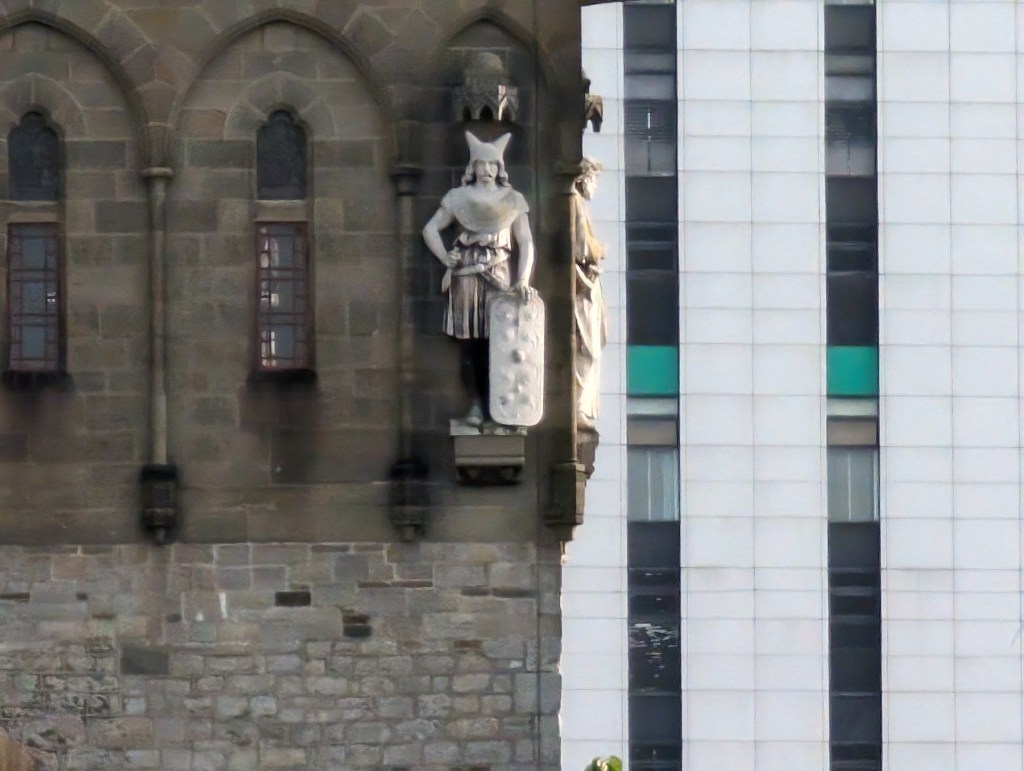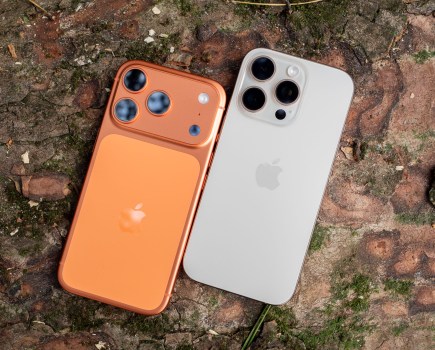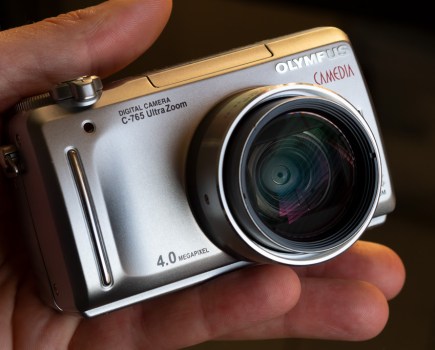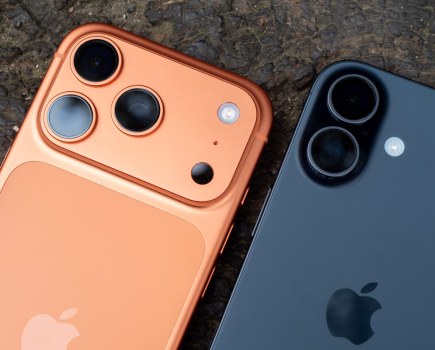There’s quite a few devices on our list of the best smartphones for photographers. However, when it comes to Android, probably the top two are the Google Pixel 8 Pro and the Samsung Galaxy S23 Ultra. Phone expert Amy Davies finds out which is best for photographers in this camera comparison.
Both of these phones got five stars in our reviews, showing off just how good they are. If the quality of the onboard camera is your main consideration when picking a new smartphone, and you’re keen on Android, these two models should be at the top of your shopping list.
But is it possible to decide which is better? That’s what we hope is best – we’ll be looking at how the two phones cope with a range of shooting scenarios, as well as taking other specifications into consideration, such as screen, battery life and the all important cost.
Keep reading to find out which will take the crown.
Google Pixel 8 Pro vs Samsung Galaxy S23 Ultra: Camera specs
The Pixel 8 Pro has a triple lens setup, with a main 50MP camera, which is 1/1.31″ in size and is joined by a 25mm f/1.68 equivalent lens. There is also a 48MP ultrawide f/2.0 lens and a 5x (113mm equivalent) f/2.8 telephoto lens, backed by a 48MP 1/2.55″ sensor.
By contrast, the S23 Ultra has four lenses. The main sensor is a whopping 200MP, and is the same physical size as the Pixel 8 Pro’s at 1/1.3″. It has a 24mm f/1.7 equivalent lens. The other cameras are a 12MP f/2.2 ultrawide lens, plus two telephotos – one which is 3x and the other which is 10x. The 3x lens is f/2.4 and 70mm equivalent, while the 10x is f/4.9 and is 230mm equivalent. Both the telephoto lenses are backed by 10MP 1/3.52″ sensors.
On paper – these setups are quite different, with both offering a good range of shooting opportunities. In some respects the Pixel is better, while in others the Samsung is better, depending on what you prioritise. If you want ultra high-resolution shooting, then the 200MP of the Samsung might draw you in.
However, what you gain in resolution for the main sensor of the S23 Ultra, you lose with its secondary cameras – you might think it’s therefore better to have three fairly high resolution sensors (50MP, 48MP, 48MP) than one very high resolution sensor (200MP) which is joined by more pedestrian units (12MP, 10MP, 10MP). The Pixel 8 Pro’s ultrawide lens also has a wider aperture than the S23 Ultra’s, plus although it has just one telephoto lens, the sensor behind it is larger than either of the Samsung’s options.
You might assume that having the fourth lens from the Samsung is better, too. However, with it having a very small sensor (1/3.52″), very narrow maximum aperture (f/4.9) and low resolution (10MP), it’s not likely to produce amazing imagery – and in fact you might get something very close from the Pixel 8 Pro’s digital offering – we’ll be looking at this more closely in the zoom section lower down.
Speaking of digital zoom however, one of the headline features of the S23 Ultra is its 100x “Space Zoom” – which we’ve generally found to be more of a gimmick than anything most people will use all that often. With the Pixel 8 Pro, you get up to 30x digital zoom.
For video, with the S23 Ultra you get 8K 30fps video recording, something fairly rare among smartphones. There’s also 4K at 30/60fps, Full HD at 30/60fps and a range of other video options. Meanwhile, the Pixel 8 Pro gives you 4K at 24/30/60fps, Full HD at 24/30/60fps, plus again a range of other options.
Looking at specs alone, there’s not really a clear overall winner here as each phone has its own merit. We’d probably say however that the Pixel 8 Pro is a better all-rounder. Unless you really do need 200MP and 8K video, most people are likely to be better off with the Pixel 8 Pro.
Google Pixel 8 Pro vs Samsung Galaxy S23 Ultra: Camera apps and shooting modes
Until recently, the Pixel series faced a little bit of criticism for not including a “pro” or “advanced” mode, something which is found in most Android smartphones – it’s the same criticism levelled at phones like the iPhone 15 Pro Max.
However, for the Pixel 8 Pro, Google has finally introduced a Pro mode which gives you the opportunity to adjust parameters such as shutter speed and white balance, as well as enable other functions such as focus peaking for manual focusing.
The Samsung S23 Ultra has two pro modes, one simply called “Pro” and another called “ExpertRAW” which has additional controls. Although well featured, it’s a shame that these are the only modes where you can shoot in raw format – the Pixel by contrast gives you the option to shoot raw in the general mode too.
There are a number of other shooting modes you can use with either device, too – many of which are fairly standard fare for modern smartphones nowadays.
You have a Portrait mode available on both, allowing you to create shallow depth of field effects. The S23 Ultra’s is more flexible however as you can shoot at 1x, 2x and 3x focal lengths, while the Pixel 8 Pro only gives you 1.5x and 2x to choose from. Both also have a low-light mode, called Night on the S23 Ultra and Night Sight on the Pixel 8 Pro. Both should automatically activate should low light be detected, but you can also manually select them too. All lenses are available while shooting in this mode.
Both have a macro mode which switches on as soon as you get close to a subject – transferring to the ultrawide lens. The Pixel 8 Pro makes use of artificial intelligence for a couple of other useful modes, including Action Pan and Long Exposure for getting creative with slow shutter speed effects – this is something that the S23 Ultra doesn’t offer.
For video modes, there’s standard shooting modes available for both, which are joined by additional options. The S23 Ultra has advanced video modes, so serious content creators may be more drawn towards it, but the Pixel 8 Pro has arguably more fun video modes to try.
It’s also worth thinking about in-phone editing options, as this is a big headline feature for the Pixel 8 Pro. It offers functions such as “Magic Editor” and “Best Take”, which again uses AI to enhance your photos – for example, swapping around faces if you shoot multiple group shots to get the best expression for every subject. The S23 Ultra offers editing options, but they’re nowhere near as automated.
We’d say the winner here is the Pixel 8 Pro. It has lots of great shooting modes, as well as working well in the standard Photo mode, including being able to record raw format at this point too. While the Samsung is very comprehensive too, the Pixel 8 Pro is just that little bit more fun to work with.
Google Pixel 8 Pro vs Samsung Galaxy S23 Ultra: General image quality
As you’d expect from two phones which both got five star reviews, the overall image quality from both the Pixel 8 Pro and the S23 Ultra is excellent, across a range of scenarios.
Both produce nicely detailed images, with good colours and balanced exposures. The S23 Ultra can go a little overboard with saturation sometimes, leaving the Pixel 8 Pro a little bit more on the “realistic” side.

The S23 Ultra’s colours are little overly vibrant, albeit pleasing. Photo: Amy Davies
The Pixel 8 Pro’s colours are pleasing too, but stick closer to reality. Photo: Amy Davies
For images taken with the S23 Ultra’s main sensor we can see there’s a little more detail if you examine closely – playing spot the difference on a smartphone screen, or via social media apps like Instagram is likely to be a much trickier challenge though so in real-world usage, this difference is fairly minimal.
That said, we can see more detail from the ultrawide lens for the Pixel 8 Pro – so it’s arguably swings and roundabouts here.
Scenes which contain some artificial light yield a slightly yellower result from the S23 Ultra, whereas the Pixel 8 Pro produces much more correct results. However, it’s also fair to say that in our example scenes here, the S23 Ultra is probably closer to reality, while the Pixel 8 Pro has altered the truth to produce a better image.

An image under artificial light from the S23 Ultra. Photo: Amy Davies
The same scene shot with the Pixel 8 Pro – it’s better, but it’s actually less close to reality than the Samsung’s. Photo: Amy Davies
Overall – both of the models put in a very good general performance, so it might be easier to spot some bigger differences when looking at specific shooting scenarios.
Google Pixel 8 Pro vs Samsung Galaxy S23 Ultra: Zoom
The Pixel 8 Pro has a 5x zoom lens, while the S23 Ultra has both a 3x zoom and a 10x zoom lens. Some will argue that a 3x zoom is more useful for general zooming, while others will prefer being able to get just that little bit closer with a 5x lens.

Samsung S23 Ultra using the 3x zoom lens. Photo: Amy Davies
Image quality from the Pixel’s 5x lens appears to be slightly better than the Samsung’s 3x lens – not surprising considering the Pixel 8 Pro’s 3x lens is higher in resolution and the sensor is larger. That said, that’s really only if you’re scrutinising quite closely.
In theory, having the extra 10x lens from the S23 Ultra should result in better 10x images, as to achieve the same with the Pixel 8 Pro you’ll need to use digital zoom. However, if we look at two images shot exactly like that side by side, the results may surprise you.
While the S23 Ultra’s has a touch more detail, there’s really not a lot in it – and again, if you’re only looking at your images on a smartphone screen, the difference is probably not enough to worry about – or to persuade you that you should spend your money on the Samsung to get it.

An image shot with the S23 Ultra’s 10x lens. Photo: Amy Davies
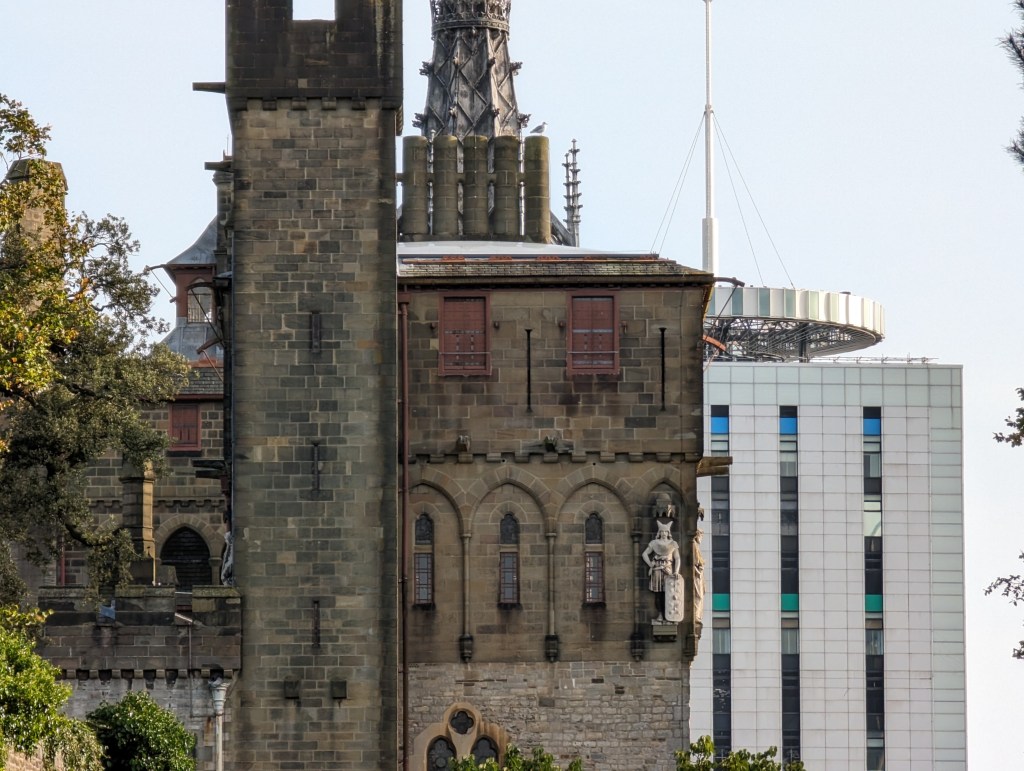
The same scene shot with the Pixel 8 Pro set to 10x digital zoom – the results are quite close. Photo: Amy Davies
Going beyond that, we’ve got digital zoom. The Pixel 8 Pro maxes out at 30x, while the S23 Ultra can go to 100x. At 30x from both models, the results are slightly better from the S23 Ultra, though neither are pictures you’d likely use for anything beyond a record shot. At 100x, the result is poor – but if you really feel like you need it then it’s only the Samsung which offers it.

Samsung S23 Ultra at 100x “Space Zoom”. Photo: Amy Davies
So who’s the winner here? Well again, this is a fairly close run thing. While the S23 Ultra has the additional lens, the results from it fairly closely match the same digital offering from the Pixel 8 Pro – its presence is therefore not necessarily a deal-breaker. For going beyond 10x, the 30x and 100x options from the S23 Ultra are better than the Pixel 8 Pro’s – but these are levels of zoom that most people aren’t going to use all that often. Technically speaking, the S23 Ultra is probably the better of the two here, but, in reality, it’s arguably pretty much a draw. Let’s see if that extra lens helps more in low light…
Google Pixel 8 Pro vs Samsung Galaxy S23 Ultra: Low Light Performance
Both of these phones excel when it comes to after-dark shooting, so it’s easy to recommend them both as some of the best smartphones for low light.
When shooting with the 1x lens, you get the best results from either device. They’re both great, but there’s perhaps marginally a little more shadow detail in the Pixel 8 Pro in some areas – though it’s very hard to tell a huge amount of difference. The colours are slightly different – the S23 Ultra is perhaps a bit more pleasing, but the Pixel 8 a bit more accurate.
An image shot with the Pixel 8 Pro’s Night Sight mode, 1x lens. Photo: Amy Davies

The same scene with the S23 Ultra’s Night Mode, 1x lens. Photo: Amy Davies
Results from the ultrawide are also similarly matched too, with again the Pixel 8 Pro being ever so slightly better. You get a 3x zoom with the S23 Ultra and a 5x zoom from the Pixel 8 Pro – both of these put in good performances if you need to get closer, albeit not as good as the 1x and the ultrawide lens. There’s detail missing from both shots, so this perhaps comes down to how much you’re likely to want to zoom in low light.
Caption: The Pixel 8 Pro’s Night Sight using the ultrawide lens. Photo: Amy Davies

The S23 Ultra’s ultrawide lens using Night mode. Photo: Amy Davies
As already mentioned, the Pixel 8 Pro doesn’t have a fourth lens, so to match the S23 Ultra’s 10x lens, you can use digital zoom. Normally we’d expect this to have a very obvious detrimental effect in low light, but the results are actually pretty good. There’s certainly more detail from the S23 Ultra’s real lens, but there’s also more noise too. While there’s some noticeable smudging going on in the digital zoom of the Pixel 8 Pro, if you’re looking at these images small on a phone screen, the differences are once again minimal. Here again we can see that from an optical technical point of view, the S23 Ultra is marginally better – but whether you actually need it in real-world shooting, is very definitely debatable.
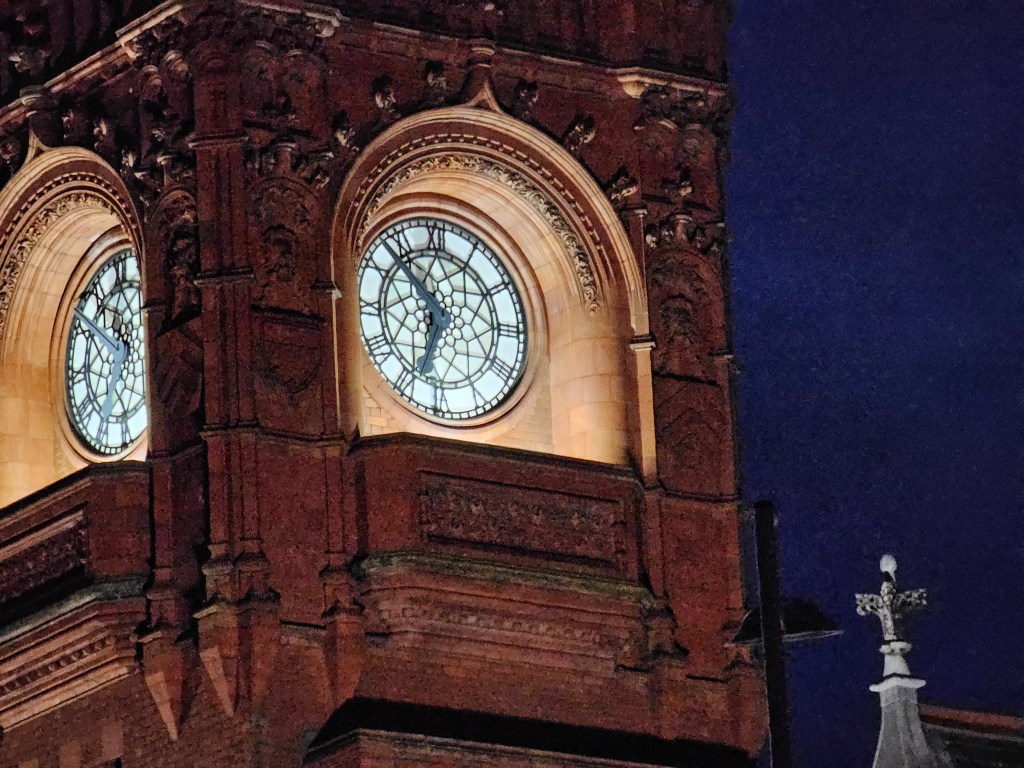
A Night image shot using the S23 Ultra’s 10x lens. Photo: Amy Davies
For the Pixel 8 Pro, to get to 10x you need to use digital zoom – but the result is pretty good. Photo: Amy Davies
Zooming beyond 10x – from either phone – in low light is not really advisable, as both produce smudgy images, which again might be OK if you just need a record shot, but are otherwise not great.
So which is the winner? Well it’s probably the S23 Ultra by a tiny sliver, but, unless you’re going to spend hours scrutinising photos side by side (who would do that?) then again it’s kind of a draw.
Google Pixel 8 Pro vs Samsung Galaxy S23 Ultra: Macro
You should expect macro mode to engage as soon as you get particularly close to a subject. On doing so, the phone will automatically switch to the ultrawide lens. You can switch off macro focusing if you’d rather stick with the main lens in either case.
A macro image captured with the Pixel 8 Pro. Photo: Amy Davies

A macro image captured with the Samsung S23 Ultra. Photo: Amy Davies
The biggest differences here, hardware wise, is that the Pixel 8 Pro has a 48MP ultrawide lens with an f/2.0 sensor, while the S23 Ultra has a 12MP f/2.2 ultrawide.
We might expect the Pixel 8 Pro to be a bit better based on specs alone, but looking at images side by side, there’s very little to pull them apart, with both putting in great performances for close ups. There’s lots of detail in both as shown here, but the edge probably just about goes to the S23 Ultra for a more pleasing overall exposure, though I prefer the colours from the Pixel 8 Pro.
Google Pixel 8 Pro vs Samsung Galaxy S23 Ultra: Portraits
There is a dedicated portrait mode with both the S23 Ultra and the Pixel 8 Pro. With the Pixel 8 Pro you can shoot at 1.5x or 2x focal lengths, whereas you have a bit more flexibility with the S23 Ultra as it gives you 1x, 2x and 3x options.
A portrait shot with the Pixel 8 Pro Portrait Mode (2x option). Photo: Amy Davies
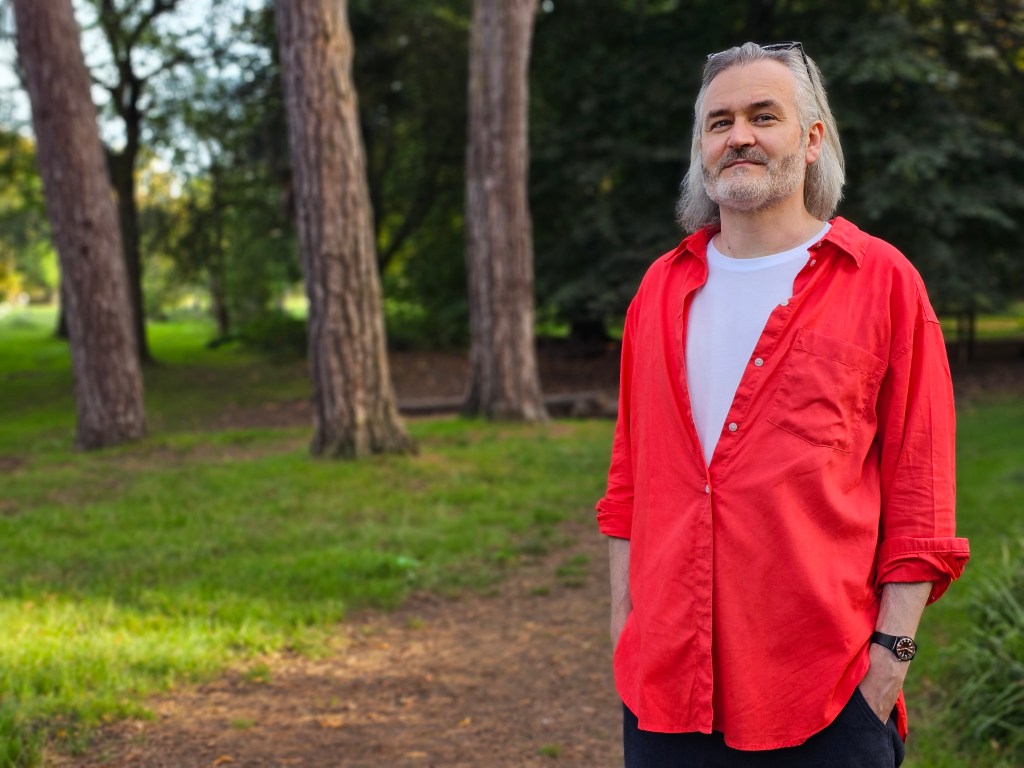
The same portrait, shot with the S23 Ultra’s Portrait Mode (2x option). Photo: Amy Davies
In terms of results, both do a reasonably similar job. In our test here, the S23 Ultra probably has a slightly better / more natural drop off between the subject and the background (both shot at 2x) but there’s not a huge amount in it. Being able to go to 3x with the S23 Ultra means you can isolate the subject even further from the background, which gives that the advantage here.
A selfie shot with the Pixel 8 Pro (Portrait mode). Photo: Amy Davies

A selfie shot with the Samsung S23 Ultra (Portrait mode). Photo: Amy Davies
For selfies, both have an autofocus camera and produce good results. Also for both you can activate a portrait effect for selfies – here the Samsung produces a much more natural result.
You can also mix Night and Portrait modes with both devices. Here, the results are fairly close, with the best results seen at 1x (Samsung) and 1.5x (Pixel). On close inspection, the Samsung has just a little bit more detail though.
Here the winner is a bit more clear cut. While both are good, the S23 Ultra produces slightly more natural results, is better in low light, and has more flexibility for shooting.
Google Pixel 8 Pro vs Samsung Galaxy S23 Ultra: Video
Whichever phone you pick here, you get great video specifications. However, if you have a craving for 8K video, then only the Samsung will satisfy that.
For the vast majority of users however, 4K, or even Full HD, will be what they use most, so that’s what we’ve compared most closely for our test.
Both the phones produce great results at 4K/60fps, with decent stabilisation. One downside of shooting at 4K/60fps with the S23 Ultra is that you can’t switch between the lenses while recording, whereas you can with the Pixel 8 Pro.
There are additional stabilisation options available here too, with “SuperSteady” for the S23 Ultra, and “Pan” for the Pixel 8 Pro.
Other useful modes include being able to create a shallow depth of field effect for videos with either model. If you’re an advanced vlogger you might be drawn towards the S23 Ultra for its ProVideo mode, which gives you lots of extra shooting options.
On the whole, for video, the results are fairly evenly matched between the two – however if you want the extra functionality of 8K video and pro video shooting modes, then it has to be the S23 Ultra that wins out.
Google Pixel 8 Pro vs Samsung Galaxy S23 Ultra: Screen and Design
These are both large smartphones, with large screens to match – however the Samsung is larger with its 6.8″ Dynamic AMOLED, compared to the Pixel’s 6.7″ Super Actua screen.
The S23 Ultra’s screen is Quad HD+ at 3088 x 1440 pixels at 500ppi and 120Hz, whereas the 8 Pro’s is 2992 x 1344 pixels at 489ppi and 120Hz. Considering the S23 Ultra’s slightly larger size, this means the resolution is fairly well matched. The brightness for the Pixel 8 Pro outdoes the S23 Ultra though at a max of 2400 nits, vs 1750 nits for the Samsung.
Either way, the screens for both look great and display your photos and videos brilliantly. Some might say the S23 Ultra is excessively large, but at 6.7″ the Pixel isn’t exactly far behind. Both offer IP68 waterproofing and both use Corning Gorilla Glass Victus 2 for the screens, so both should be about even in terms of toughness – we’ve found no problems with scratches or chips on either device.
When it comes to design aesthetics – that’s very much a point of personal taste. For this generation, Google has rounded off the corners of the Pixel 8 Pro, whereas the S23 Ultra is a bit boxier. Personally, I prefer the the Pixel 8 Pro’s look, while the visor camera setup on the back is arguably a bit quirkier – but there’s no right or wrong answer here.
Overall for this section it’s hard to pick a winner. If you want a huge smartphone, then the S23 Ultra is the best choice, but otherwise they’re fairly evenly matched in most respects.
Google Pixel 8 Pro vs Samsung Galaxy S23 Ultra: Battery life, charging and storage
A benefit of larger smartphones like both of these devices is that you get a long battery life thanks to the big batteries found within them.
The Pixel 8 Pro has a 5050mAh battery, while S23 Ultra has a 5000mAh battery. Interestingly however, the S23 Ultra boasts a 26 hour battery life, compared to the Pixel 8 Pro’s 24 hour. Note this usually relates to if you were to do nothing but constantly play a video and doesn’t really match up to real-world expectations.
Caption: The Pixel 8 Pro and Samsung S23 Ultra have very similar battery specifications. Photo: Amy Davies
In reality, we’ve found that both phones usually last for a normal day (wake up to bedtime) unless you really hammer it with something intensive such as constant high-resolution video recording or gaming.
Neither smartphone comes equipped with a charging block – just a charging cable. Both are USB-C compatible, as is the standard these days. Both offer fast charging and wireless charging, but if you want to take advantage of these functions you’ll need to buy your own chargers.
The Pixel 8 Pro is available in 128GB, 256GB and 512GB variants, while the S23 Ultra comes in 256GB, 512GB and 1TB options. This means you can pick up the Pixel for significantly cheaper if you don’t need the extra storage – while the 1TB option for the Samsung is probably only likely to be craved by relatively few people.
Here the two phones are very evenly matched, so we can definitely call this one a draw.
Google Pixel 8 Pro vs Samsung Galaxy S23 Ultra: Price
While the Pixel 8 Pro isn’t exactly what we’d describe as cheap, Google has become known for offering good value for what you pay.
The lowest priced Pixel 8 Pro is $999/£999, for which you’ll get 128GB of memory. By contrast, the cheapest S23 Ultra is $1249/£1249, so significantly more. In fairness however, you do get 256GB for that outlay.
Perhaps therefore a fairer comparison is with the Pixel 8 Pro’s 256GB option, which will set you back $1059/£1059, so it’s still a significant saving. You can also opt to pay $1179/£1179 for a 512GB Pixel 8 Pro.
The price of the Pixel 8 Pro perhaps makes it more attractive than the S23 Ultra. Photo: Amy Davies
The Samsung S23 Ultra will set you back $1399/£1399 for a 512GB version, and there’s also a 1TB option costing $1599/£1599.
All that said, the S23 Ultra has been around for longer, so it’s easier to find it in the second-hand market if you’re keen to save even more cash. The Pixel 8 Pro meanwhile is already seeing some price drops even brand new, and possibly won’t hold its value as well as the Samsung – so that’s something to consider.
Overall however, the winner here is the Pixel 8 Pro, which although not cheap offers great value for money and gives you the option to go for a lower price if you don’t need loads of storage.
Google Pixel 8 Pro vs Samsung Galaxy S23 Ultra: Verdict
There are lots of excellent smartphones on the market which are well-suited to photography, but if we had to narrow it down to just two – the Samsung S23 Ultra and the Pixel 8 Pro would probably get our votes.
Choosing between them to pick just one is very tricky indeed. They’re both excellent, and they both have pros and cons – as we’ve seen throughout this article.
Overall, from a technical excellence point of view, then it’s probably the Samsung which comes out on top. Things like an extra lens, 8K video recording, pro video modes and a larger screen help it to do that.
That said – you can counter all of those specs with what the Pixel 8 Pro can do. The extra lens is matched fairly well digitally, and does the average person actually need 8K video and pro specs. The screen is slightly smaller, but then arguably, 6.8″ is too big anyway.
When you consider the cost saving for buying the Pixel 8 Pro, which comes in at least $200/£200 cheaper, then the minor superiority that the S23 Ultra offers seems less appealing.
All things considered, although the S23 Ultra is just about the better phone (camera wise at least) – and it really is just about – the overall crown probably should go to the Pixel 8 Pro for the amount it offers compared to the price.
Further reading:
- Samsung Galaxy S23 Ultra vs Samsung Galaxy S23: Cameras Compared
- iPhone 15 Pro vs Samsung Galaxy S23 Ultra: Is bigger better?
- iPhone 15 Pro vs Samsung S23: Battle of the small flagships
- iPhone 14 Pro vs Samsung S23 Ultra: Cameras Compared
Follow AP on Facebook, Twitter, Instagram, YouTube and TikTok.


